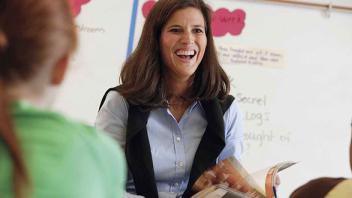There are many teaching methods that can help struggling readers. The best ones for kids with dyslexia use an Orton–Gillingham approach. But teachers and specialists may use other methods to supplement their main instruction. Learn about these commonly used programs.
Orton–Gillingham
The Orton-Gillingham approach is the “gold standard” for teaching reading to kids with dyslexia. It focuses at the word level by teaching the connections between letters and sounds. Orton–Gillingham also uses what’s called a multisensory approach. It taps into sight, sound, movement and touch to help kids link language to words. Students learn the rules and patterns behind why and how letters make the sounds they do. Orton–Gillingham is the basis for a number of other reading programs. These programs are mostly used by special education teachers.
Reading Mastery
Reading Mastery is very systematic. It starts by teaching word sounds and what the corresponding letters and words look like. Next, kids learn to read passages. Then they build vocabulary while increasing their understanding of what they read. Students are grouped by reading level. Reading Mastery is often used by general and special education teachers as a complement to other programs. It may also be used on its own. Teachers tend to use one of two versions. Reading Mastery Classic is for grades K–3 and Reading Mastery Plus is taught in grades K–6.
Read Naturally
Read Naturally aims to improve reading fluency and understanding in kids and adults. It uses texts, audio CDs and computer software. Usually students listen to a story and then read the same text aloud. The program tracks progress carefully. Students work at their own level and move through the program at their own rate. Usually they work independently. Read Naturally is most often used as an add-on to the main program being used in the general education classroom.
READ 180
READ 180 is for struggling readers in grades 3–12. It involves teacher instruction, working on a computer and reading alone. Kids also listen to someone read aloud and then read the same text. The program includes workbooks, books for reading alone, audiobooks and software that tracks student progress. It’s most often used by reading specialists to give extra support.
Project Read
Project Read is used in a classroom or group. The program emphasizes instruction by the teacher. Lessons move from letter-sounds to words, sentences and stories. Project Read has three strands: listening, understanding and writing. All three strands are taught at all grade levels, though the emphasis differs by grade. The program is sometimes used in general education classrooms where many students are struggling. In schools where most kids are on track, the program is often used by special education teachers or reading specialists to give extra support.
Voyager Passport
The Voyager programs are most often used by reading specialists in addition to the general education reading program. Voyager Passport is a small-group program for grades K–5. It includes letter-sound understanding, sight words and vocabulary. Voyager Passport Reading Journeys is for teens who struggle with reading. The program is taught in a group using science and social studies topics. There is also a Voyager Universal Literacy System. This is a K–3 curriculum that includes a program for struggling readers.
Read, Write and Type!
Read, Write and Type! Learning System is a software program to teach beginning reading skills, emphasizing writing. The program was developed for 6- to 9-year-olds who are beginning to read, and for struggling students. The main goal is to help students become aware of the 40 English phonemes, or word sounds, and to associate each with a finger stroke on the keyboard. Read, Write and Type! is often used as a supplement to other reading programs.
LANGUAGE!
LANGUAGE! is for struggling learners in grades 3–12 who score below the 40th percentile on standardized tests. It is most often used by special education teachers. The curriculum uses a six-step format for each lesson. The first step is word-sound awareness. The second step is word recognition and spelling. Then comes vocabulary and then grammar. Listening and reading comprehension come next. Writing is the last step. There is also a version of this program that is specifically designed for English language learners.
Read Well
Read Well is for K–3 students. The program teaches word-sound awareness. It also works on vocabulary and comprehension. Teachers begin by modeling what to do. They then gradually decrease their support until eventually students are asked to do the reading task by themselves. The program includes activities for the whole class as well as small-group lessons. Read Well is often used in the general education classroom.
Fast ForWord
Fast ForWord is a computer-based program that focuses on the link between spoken language and written words. The software aims to help kids master reading by improving things like memory, processing speed and attention. But the impact the program reports to have on these skills isn’t widely accepted. Nor is its impact on improving reading. Fast ForWord is used by clinicians and specialists.
This article originally appeared on Understood.org , a free online resource for parents of children with learning and attention issues. Reprinted courtesy of Understood.org © 2018 Understood, LLC. All rights reserved.

